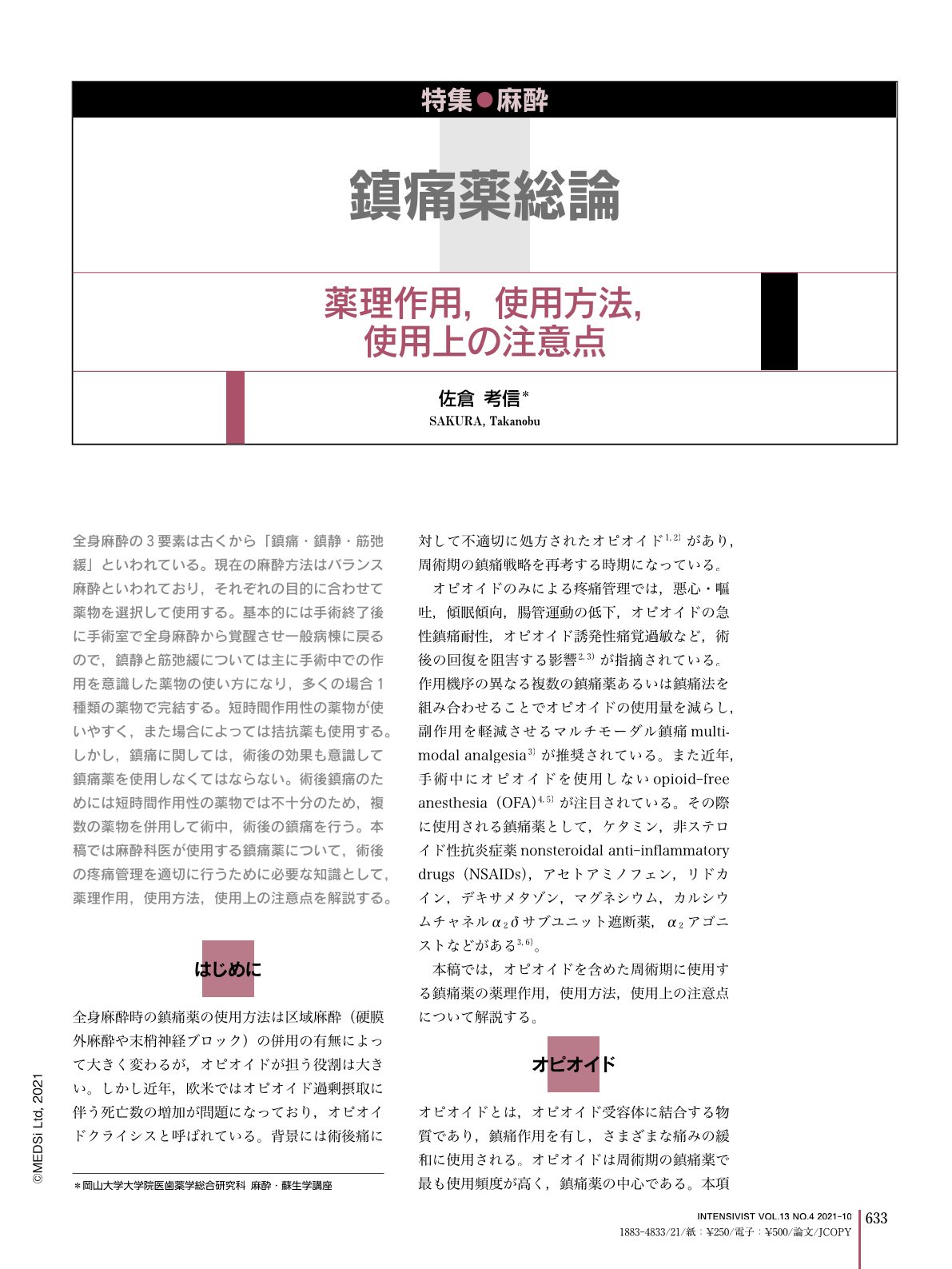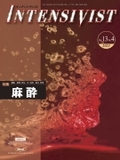Japanese
English
- 有料閲覧
- Abstract 文献概要
- 1ページ目 Look Inside
- 参考文献 Reference
- サイト内被引用 Cited by
全身麻酔の3要素は古くから「鎮痛・鎮静・筋弛緩」といわれている。現在の麻酔方法はバランス麻酔といわれており,それぞれの目的に合わせて薬物を選択して使用する。基本的には手術終了後に手術室で全身麻酔から覚醒させ一般病棟に戻るので,鎮静と筋弛緩については主に手術中での作用を意識した薬物の使い方になり,多くの場合1種類の薬物で完結する。短時間作用性の薬物が使いやすく,また場合によっては拮抗薬も使用する。しかし,鎮痛に関しては,術後の効果も意識して鎮痛薬を使用しなくてはならない。術後鎮痛のためには短時間作用性の薬物では不十分のため,複数の薬物を併用して術中,術後の鎮痛を行う。本稿では麻酔科医が使用する鎮痛薬について,術後の疼痛管理を適切に行うために必要な知識として,薬理作用,使用方法,使用上の注意点を解説する。
The three elements of general anesthesia have long been referred to as “analgesia, amnesia, and akinesia.” The current method of anesthesia practice is called balanced anesthesia, in which drugs are selected and used according to their respective purposes. In most operations, the patient is awakened from general anesthesia in the operating room after surgery and returned to the general ward. Short-acting drugs are easy to use, and in some cases, antagonists are also used. However, analgesics must be used with an awareness of their postoperative effects. For postoperative analgesia, short-acting drugs are insufficient, so multiple drugs are used in combination to provide intraoperative and postoperative analgesia. This article describes the pharmacological effects, methods of use, and precautions in the use of analgesics by anesthesiologists.

Copyright © 2021, MEDICAL SCIENCES INTERNATIONAL, LTD. All rights reserved.


